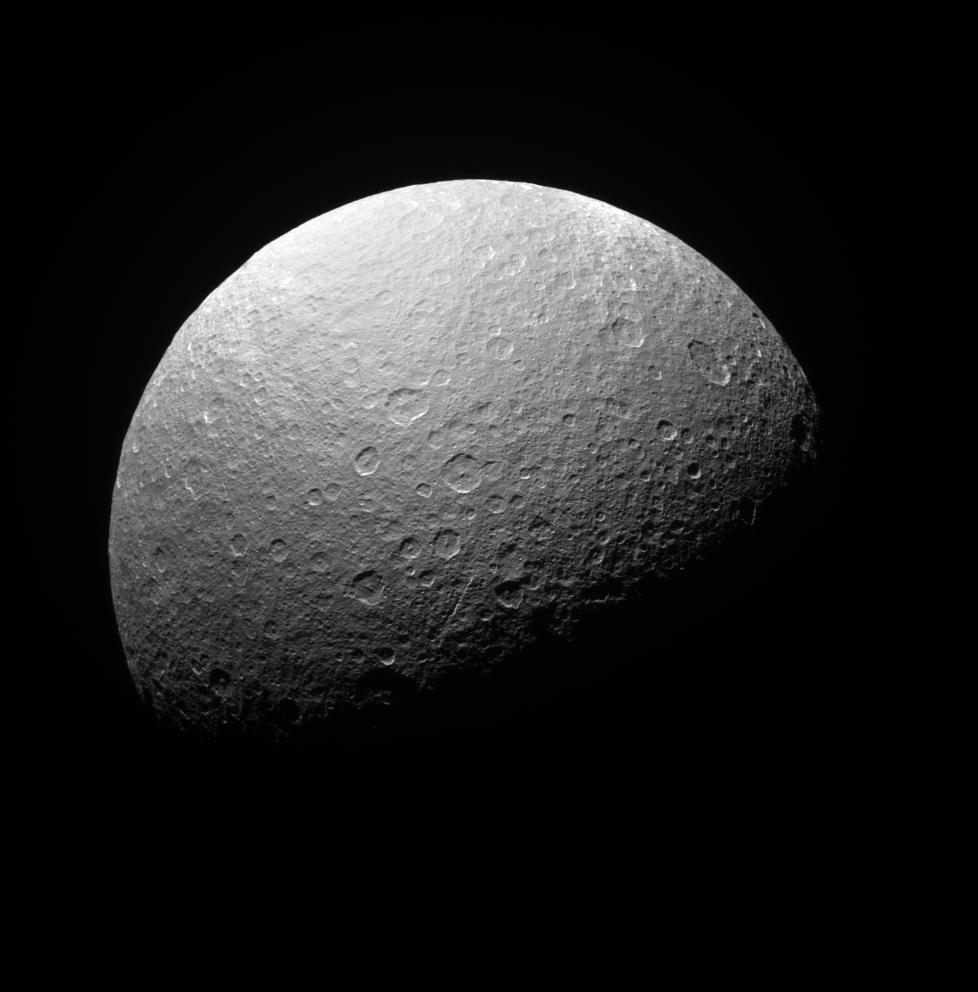South on Rhea

| PIA Number | PIA09898 |
|---|---|
| Language |
|
The Cassini spacecraft surveys the south polar region of icy Rhea.
This is a similar view to Above Rhea's South Pole. This view is a bit farther south and has slightly different solar illumination.
Cassini flybys have shown that Rhea is not differentiated, or separated into distinct layers; instead, it appears to be a mixture of approximately 75 percent ices and 25 percent rock and metal.
Saturn's second-largest moon, Rhea is 1,528 kilometers (949 miles) wide.
The image was taken with the Cassini spacecraft narrow-angle camera on April 12, 2008 using a spectral filter sensitive to wavelengths of ultraviolet light centered at 338 nanometers. The view was acquired at a distance of approximately 345,000 kilometers (214,000 miles) from Rhea and at a Sun-Rhea-spacecraft, or phase, angle of 73 degrees. Image scale is 2 kilometers (1 mile) per pixel.
The Cassini-Huygens mission is a cooperative project of NASA, the European Space Agency and the Italian Space Agency. The Jet Propulsion Laboratory, a division of the California Institute of Technology in Pasadena, manages the mission for NASA's Science Mission Directorate, Washington, D.C. The Cassini orbiter and its two onboard cameras were designed, developed and assembled at JPL. The imaging operations center is based at the Space Science Institute in Boulder, Colo.
For more information about the Cassini-Huygens mission visit http://saturn.jpl.nasa.gov . The Cassini imaging team homepage is at http://ciclops.org .
Credit: NASA/JPL/Space Science Institute
